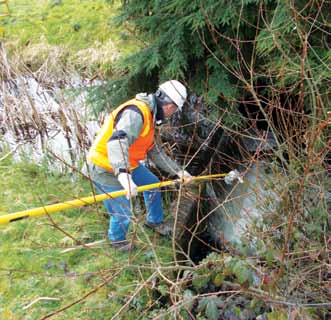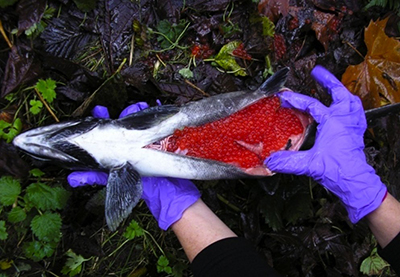Blog
What You Don't Know CAN Hurt You
-The following is a repost of an article from Storm Water Solutions, November-December 2014 Issue by Nathan Hardebeck, Owner of Clean Water Technologies. Nathan also presents NWETC's Erosion and Sediment Control/CESCL courses. To read the full article, click this link.
What You Don't Know Can Hurt You: The ins and outs of site inspection in a new era


As NPDES permits strive to improve storm water runoff, site inspections and monitoring put an increasing demand on businesses and municipalities to evaluate and report their program performance. One of the primary goals of the permits is to gather additional data through site monitoring. The permits now are requiring sites to be monitored for additional pollutants, often to lower levels than historically have been measured. This increases the demand on the inspectors, laboratories and storm water managers to accurately determine pollutant types and sources so that appropriate, effective BMPs can be implemented. Inspections no longer involve just walking around the site looking for obvious infractions, but rather trying to identify where the parts-per-billion levels of certain contaminants could be coming from.
Inspections are a required element of any storm water permit. Storm water field monitoring is the baseline from which all storm water program decisions are made. Each permit type might have slightly different emphasis points that are being monitored, yet they share common points of evaluation. As permit benchmarks are being driven to ever lower levels, more attention must be paid to how sites are being inspected and how samples are being collected. Field staff and laboratories must employ clean techniques and sample analysis equipment to accurately interpret the water quality of the discharge. In many cases, sampling equipment used by laboratories measures only to the parts-per-million level and then estimates to the parts-per-billion level required by many permits. If samples are sent to laboratories that are using analytical instruments that do not have quantitation limits that can accurately and consistently measure the pollutant parameter, the entire storm water program could be built on a foundation of false information. Without accurate sample data, it is difficult to make the most cost-effective decisions on BMPs. Worse yet, if the sampler and laboratory do not adhere to clean practices in the sampling process, contaminants not related to the sampled discharge might create a trigger of corrective actions due to benchmark exceedance. Antiquated methodologies and laboratory equipment that measured storm site inspection water pollutant levels 10 years ago often are not sophisticated enough to measure to the levels of today’s benchmark standards.
Read the rest of the article here.
Headlines
The City of Portland, Oregon invites applications for the position of Site Development Inspector I
CITY OF PORTLAND invites applications for the position of:
Site Development Inspector I
The City of Portland, Oregon invites applications for the position of Site Development Inspector I
CITY OF PORTLAND invites applications for the position of:
Site Development Inspector I
*Follow NWETC on twitter, and "like" us on Facebook by clicking the icons:
© 2025 NWETC. All rights reserved








